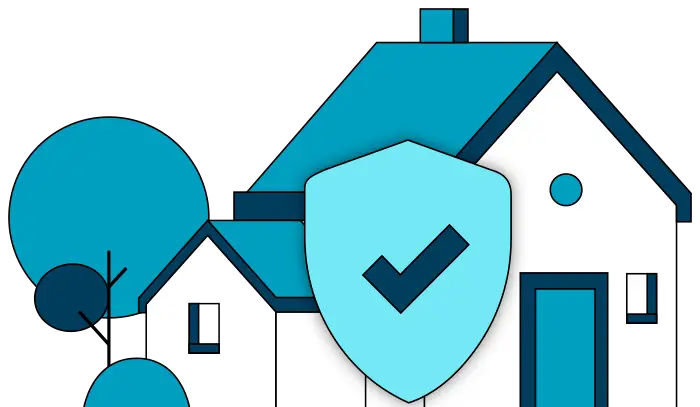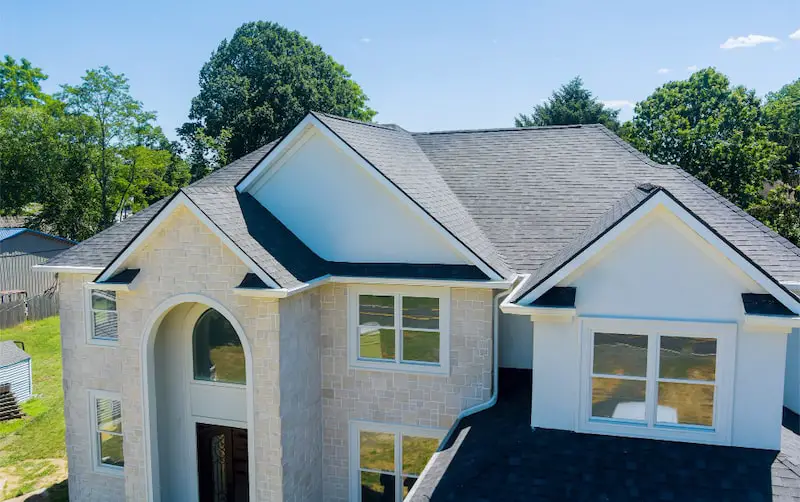The roof of their home is not something homeowners may think about too often. They may think even less about how the shape and type of roof may affect their home insurance cost and the cost of the roof in general. A roof is a vitally important part of a house as it protects the homeowner and the rest of the house from any number of perils.
- There are a number of roof features that impact the homeowner’s insurance policy, including age, condition, material, and shape
- The gable roof shape is the most common shape, but there are five common roof shapes
- Regular roof maintenance is important for a homeowner to be covered for damage that may occur
Roof features and how it impacts homeowners insurance
The roof of a home is the main form of protection for a homeowner from any sort of peril out there such as wind, fire, hail, and others. A homeowner’s roof is a key piece of determining what is covered under a home insurance policy and to what extent the home structure is covered.

There are four key features of the roof that factor into the home insurance coverage:
Age
As may be expected, the newer the age of the roof the cheaper the coverage may be. An older roof is far more susceptible to damage leading to the insurance company charging a higher premium. In many cases, a roof that is 15, 20, or more years older may not be eligible for coverage under a standard homeowners insurance policy.
Condition
The better the condition of the roof, the better the rate. If the condition of the roof is poor due to normal wear and tear or lack of maintenance by the homeowner, there is a strong likelihood that a claim for damage to the roof may be denied.
Material
The material of a roof makes a difference in rates and durability as well. A slate roof is favored by insurance providers for the greater protection they provide, whereas a wooden roof is far more vulnerable to perils such as fire and therefore will lead to a higher premium rate or ineligibility for coverage.
Shape
Some roof shapes are better designed to protect against some risks than others. Locations that have one type of common adverse weather may have a type of roof that is better designed to protect against that type of weather. Having the preferred type of roof for a particular location can help keep the premium cost low for a homeowner.

Roof shapes and their impacts on homeowners insurance
There are five common roof shapes used today. These include gable, hip, gambrel, flat, and mansard.
Gable
Gable is the most common roof shape used. There are some different variations to a gable roof, but simply speaking this shape has two sides that are angled like an upside-down V to provide slope for easy runoff. A gable roof is particularly good for rainier climates but isn’t great for major windstorms. Some variations of a gable roof include:
- False-front gable: this variation might have multiple gables to improve the appearance
- Cross-gable: This variation has multiple intersections of gables to form an L or T
- Shed: this variation typically only slants to one side
- Gable with curves: This is the classic gable style but with some curves added to it to make the lines more appealing and less abrupt
Hip
A hip roof is similar to gable-style roofs, but instead of two slanted sides, it has four. This style of roof is quite sturdy and provides better protection from wind than a gable roof would. This is a more costly style than a gable roof.
Gambrel
This is the type of roof that may be seen on old barns. It is a form of gable roof that has softer sloping angles at the top and steeper slants on the bottom portion.
Flat
Flat roofs are just that, flat. They have little to no slope to them, which provides a homeowner with more space and potentially usable space on the roof. They are typically more prone to damage from inclement weather.
Mansard
Mansard is almost the same as a hip roof but with a softer angle at the top. This style is good for areas with high snowfall.

Roof materials and their effect on insurance and replacement costs
There are four types of materials that are typically used to build a roof: metal, slate/tile, asphalt shingles, and wood.
- Metal. Metal roofs are the most durable and longest-lasting roofs. They are also typically one of, if not the cheapest types of roofs to insure.
- Slate/tile. Slate and tile are also very durable materials and provide great protection. This type of roof is also one of the cheapest to insure. They can be costly to repair though.
- Asphalt shingles. Asphalt shingles are the most common type of material used and provide great protection to a homeowner. This type of material isn’t as durable as slate or metal but is affordable in terms of insurance costs and repair costs.
- Wood. Wooden roofs provide far less protection compared to the other materials used. A wooden roof typically commands a higher insurance premium or may not be covered at all by an insurance provider.
Roof maintenance tips
Regular roof maintenance is key to the roof being covered when damage occurs to it. One of the easiest claim denials for insurance companies is when the roof is not regularly maintained by a homeowner. Here are some quick tips for ensuring your roof stays maintained:
- Get roof inspections every one to two years
- Get debris off of the roof in a timely manner
- Replace damaged shingles in a timely manner
- Regularly document the condition of your roof
- Check with the insurance company to see what can be done to improve the condition of the roof and potentially lower the premium as well
- Construction Types and Home Insurance
- How To Get Homeowners Insurance With A Bad Roof?
- Does Homeowners Insurance Cover Wind Damage to the Roof?
- What to Do if Homeowners Insurance Got Canceled Because of a Bad Roof?
- Does Homeowners Insurance Cover Roof Replacement?
- Does Homeowners Insurance Cover Roof Leaks?
- Will a New Roof Get Me a Home Insurance Discount?

